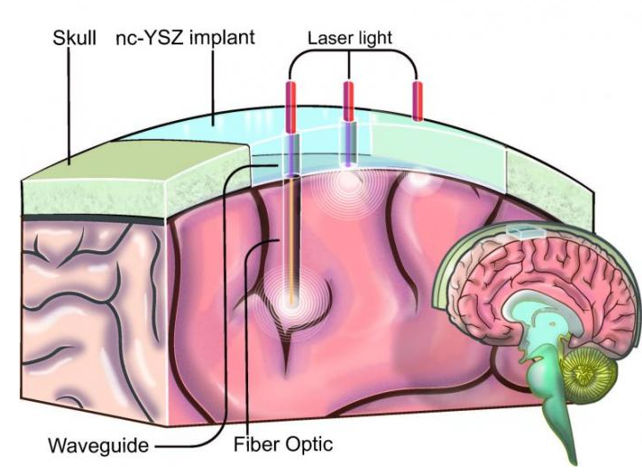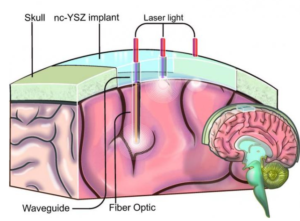Transparent skull implant set to ease laser brain surgery
Researchers at the University of California – Riverside (UCR) report their progress with the new implant material in two recently published journal papers.
Their aim is to develop a biocompatible “window to the brain” whereby surgeons will be able to direct laser therapy into patients’ brains on demand, without having to perform repeated craniotomies.
Such a material could transform a risky, highly invasive operation into a less risky, minimally invasive one.
Brain surgeons use laser therapy to treat patients with life-threatening conditions such as brain cancer, traumatic brain injury, stroke, and neurodegenerative diseases.
The two papers report how the team – led by Guillermo Aguilar, professor of mechanical engineering at UCR’s Bourns College of Engineering – tested the implant material’s biocompatibility and ability to help manage bacterial infection.
The Window to the Brain project began when Prof. Aguilar and his team found a way to make a see-through version of yttria-stabilized zirconia (YSZ) – the tough ceramic material that is used in hip implants and dental crowns.
This is not the first project aiming to create a window into the brain, but most other researchers are working with glass-based materials that are less impact resistant than YSZ.
New material overcomes two main barriers seen with skull implants
The two recently published studies show that YSZ has great promise as an alternative to materials currently used in skull implants.
Bacterial infections are a leading reason for the failure of skull implants, as the authors note, “bacterial adhesion to the cranial implant is the leading factor for biofilm formation (fouling), infection, and treatment failure.”
An implant material that can help overcome this would be a great advantage as such infections are very difficult to treat, especially as many antibiotics cannot cross the blood-brain barrier.
In the journal Lasers in Surgery and Medicine, the team reports the results of lab experiments showing delivery of laser light through a YSZ implant reduced the viability of Escherichia coli growth in a culture medium.
The researchers note this suggests E. coli biofilm formation across the thickness of the YSZ implant can be disrupted with laser treatment.
- coliis one of the bacteria that is commonly found in samples of tissue taken from patients who develop meningitisafter cranial surgery or trauma.
In the other paper, published in Nanomedicine: Nanotechnology, Biology and Medicine, the researchers describe how they successfully integrated YSZ into the tissue of live hamsters without causing an immune response or other adverse side effects.
http://www.medicalnewstoday.com/articles/311630.php



